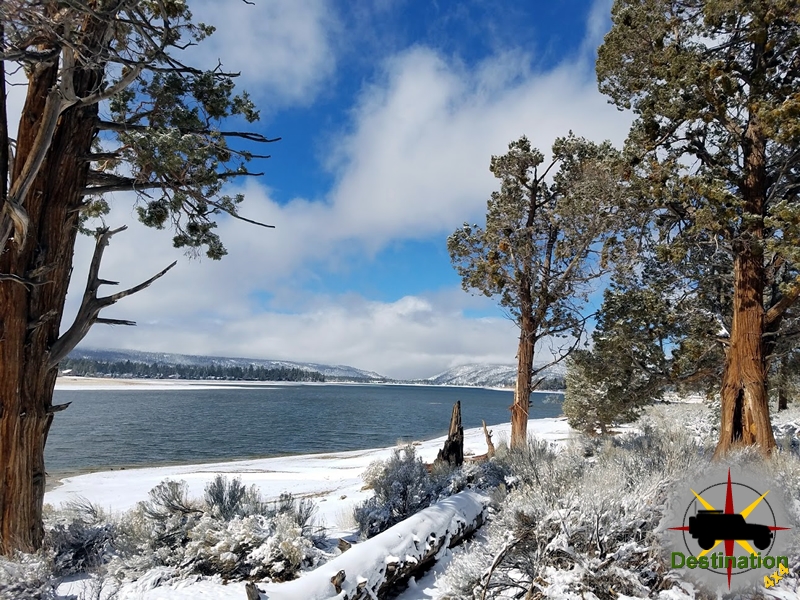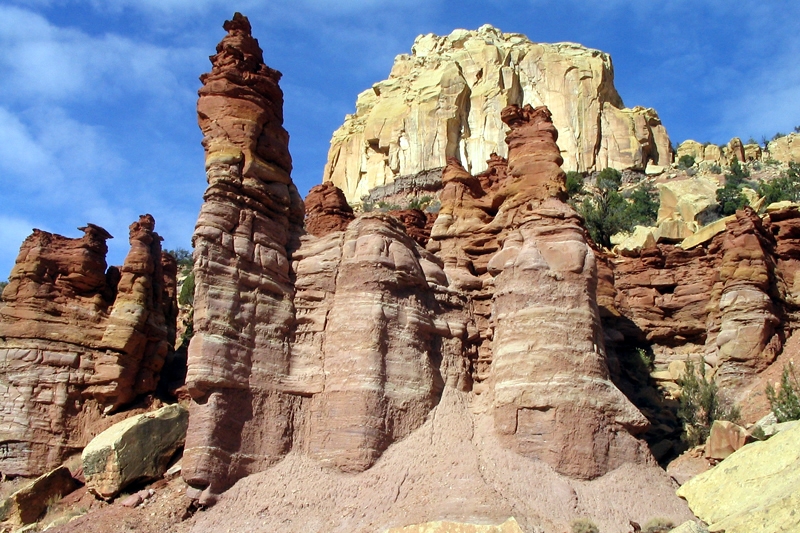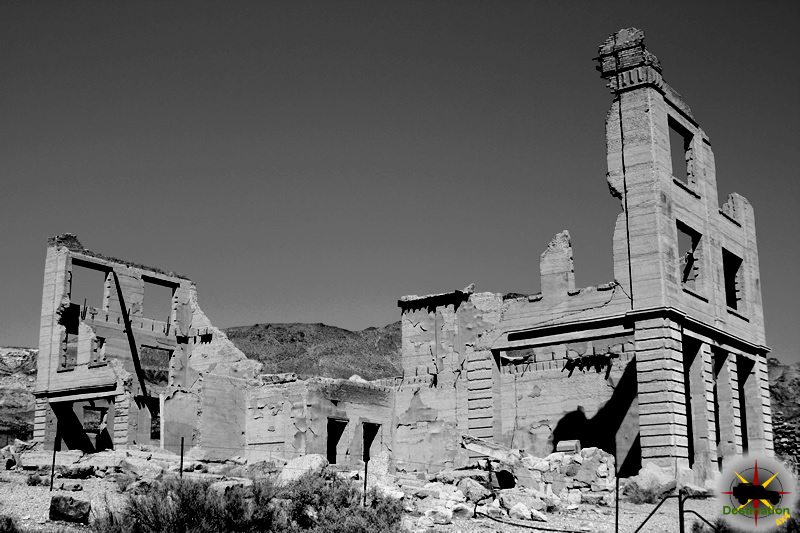
Chilao Campground
Chilao Campground is a popular camping destination located in the Angeles National Forest, in the San Gabriel Mountains of Southern California. The campground is situated at an elevation of 5,300 feet and offers stunning views of the surrounding mountains and valleys.
Facilities
Chilao Campground features 77 campsites, each of which is equipped with a fire ring, picnic table, and food storage locker. The campground also offers a number of amenities, including potable water, restrooms, and showers. Additionally, there is a camp store on-site that sells firewood, ice, and basic camping supplies.
Activities
The San Gabriel Mountains are a great destination for outdoor enthusiasts. Visitors can explore the nearby hiking trails, including the Silver Moccasin Trail, which offers stunning views of the San Gabriel Mountains. There are also opportunities for fishing and swimming in nearby streams and lakes. Additionally, the campground is located near several historic sites, including the Mount Wilson Observatory.
Location
Chilao Campground is located in the Angeles National Forest, approximately 55 miles northeast of Los Angeles. To get there, visitors can take the Angeles Crest Highway (State Route 2) to Chilao Campground Road. The campground is situated in a peaceful, secluded area, surrounded by trees and mountains.
This is a great destination for those looking to escape the hustle and bustle of city life and enjoy the beauty of the great outdoors. With its stunning natural scenery and wide range of activities, it is sure to provide a memorable camping experience for visitors of all ages.
Campground Summary
| Name | Chilao Campground |
| Location | San Gabriel Mountains, Los Angeles, California |
| Elevation | 5335 Feet |
| Number of Sites | 77 |
| Latitude, Longitude | 34.3203, -118.0134 |
Campground Map
References
Jackson Lee Davis “Diamondfield Jack”
Jackson Lee “Diamondfield Jack” Davis who was pardoned for murder in Idaho and moved to Nevada where he founded several mining camps. Davis was a hired gun who worked for the cattlemen “protecting” cattle herds and their grazing land from sheep famers.

In 1895, Davis is hired by the Sparks-Harrell cattle company to keep the sheepherders off of the grazing lands. After an altercation where Davis wounded Bill Tolman in a shooting. Following this incident, he fled south to Nevada to star or of sight. While in Nevada, Davis is known to brad about his exploits.
In February, 1896, Davis returned to Idaho and returned to work for Sparks-Harrell in Idaho. During this time, two sheepherders, Daniel Cummings and John Wilson, are shot and killed. Due to he previous bragging and his being in the area at the time, Davis became a suspect. Davis fled to Arizona and is eventually captured. Upon his capture, he is returned to Idaho, tried, found guilty and sentenced to death for of the shooting.
keep the sheep back. Don’t kill but shoot to wound if necessary. Use what measures you think best. If you have to kill, the company will stand behind you – regardless what happens.
While “Diamondfield Jack” is waiting his execution, two other men, James Bower and Jeff Gray, confess to the killing. During their trial, the two men are found not guilty. Regardless, this trial raised doubt as to the trial and Davis is reprieved one day before his scheduled execution.
Following a series of appeals, Davis is again scheduled for execution on July 3rd, 1901. At this point in time, public opinion no longer supported the death penalty. His execution is rescheduled until the Board of Pardons commutes his sentence to life in prisons. Davis is eventually pardoned on December 17th, 1902.
Following his release, Davis moved south into Nevada. In the spring of 1903, when news of promising gold strikes in Goldfield, Davis travelled to the town. After exploring and prospecting he uncovered promising ore ledges on McMahon Ridge northeast of town.
Within weeks of his discovery, prospectors flooded into the area. “Diamondfield Jack”, ever the opportunist plotted a townsite for the location and build a toll road to the new town from Goldfield. In the fall of 1904, the town reached its apex. At that time, it boasted a Post Office, three saloons, restaurants, general stores, schools, church, livery, butcher shop, blacksmith and union hall for the miners, which is impressive for a town just six months old. Public servants such as a sheriff, notary public and lawyer also maintained offices in the new formed district.
Nevada State Historic Marker #251 Text
This historical marker commemorates the lasting notoriety of flamboyant western gunman Jackson Lee Davis (1870-1949), who was better known by the colorful name, “Diamondfield Jack.” As a young man, after unsuccessfully prospecting for diamonds in the nearby hills, Davis was jokingly called “Diamondfield Jack,” a nickname that he carried the rest of his life.
In the late 1890’s, Davis gained a measure of fame as a gunman for the cattle interests, including rancher John Sparks, who would later become a Nevada governor, that were attempting to restrict sheep ranchers from southern Idaho and northeastern Nevada rangelands. Following a sensational trial in 1896, Davis was convicted of murdering two sheepherders. He was sentenced to be hanged, even after others confessed to the murders.
In 1902, Davis was finally pardoned for the crimes. He moved to the central Nevada mining towns of Tonopah and Goldfield, where he became a successful mine operator. He also helped found several mining camps, including one called Diamondfield. In later years, he drifted into obscurity and died in Las Vegas in 1949 after being struck by a car.
Nevada State Historic Marker #251 Summary
| Nevada State Historic Marker | 251 |
| Name | Diamondfield Jack Davis |
| Location | Elko County, Nevada |
| Latitude, Longitude | 41.9847, -114.6720 |
Resources
Carl Mengel – Panamint Valley Miner
Carl Mengel was a prospector and miner in Panamint Valley, located in Death Valley National Park, California. He lost a leg in a mining accident, and continued to mine. He is the namesake for Mengel Pass in the Panamint Range. His ashes and prosthetic leg are buried on top of Mengel Pass in Death Valley National Park.
Carl Mengel was born in San Bernardino, California, in 1868. After various attempts at mining, farming, and fishing for a living, Mengel moved the Butte Valley region of Death Valley in the early 1900s. He is said to have purchased the Oro Fino Claim in Goler Wash in 1912, and later found even richer deposits there
Mengel was an early prospector in the Butte Valley area and contemporary and friend of such well-known Death Valley personalities as Shorty Harris and Pete Aguereberry. The site is located about one-half mile south of Anvil Spring and commands a grand view over Butte Valley toward the Amargosa Range on the east side of the salt pan.
.In October 1924 Mengel filed on several claims south and west of Anvil Spring: Topah Numbers. 1-4, Topah Extension, and Mah Jongg Numbers. 1-6. He died in 1944 and his ashes were put in a stone cairn atop Mengel Pass approximately fifty feet outside the boundary of Death Valley National Monument.
After his death the claims located by Mengel in Butte Valley underwent numerous resales through the 1940s, 1950s, and 1960s. The Topaz (Topah) Extension, Topaz (Topah) No. 1, and part of the Topaz (Topah) Extension claims were later amended and located as the Greater View Springs, Greater View Springs No. 1, and Greater View Springs Millsite, respectively.
References
Albert Mussey Johnson – Death Valley Ranch Owner
Albert Mussey Johnson (1872 – 1948) was a businessman and investor who received notoriety as the millionaire, who built “Scotty’s Castle” in Death Valley, California. He was born into a Quaker family n Oberlin Ohio and attended Cornell University to study engineering.
Johnson borrowed a sum of $40,000 from his father and invested in some mining operations in Joplin, Missouri. This initial investment returned five hundred percent dur to a zinc boom. Albert travelled across Utah and Colorado, in December if 1899, with his father looking for investment opportunities in power production or mining ventures. While on this trip, the father and son team are involved in a rail accident which kills his fater and leaves Albert bedridden with a broken back.
Johnson eventually recovered from his broken back but he suffered with chronic medical issues and walked with a noticeable limp. This injury caused Johnson to focus his professional efforts in economic investment pursuits. He pursue relationships with his fathers partners and soon built up a career as a vice president of the Arkansas Midland Railroad and later the president of the North American Cold Storage Company.
In 1904, Walter Scott AKA Death Valley Scotty ran into Johnson while Scotty is looking for new investors for his gold mines in Death Valley, California. Scott was a conman who would defraud investors of this infamous gold mines. Despite no return on is investment, Johnson continued to send Scott’s ventures.

Johnson first visited Death Valley in 1906 to tour Scott’s Gold Mines. The two became embroiled in the Battle of Wingate Pass, where Scott’s brother is shot in the groin. This injury forced a retreat from Death Valley. Johnson did not return to Death Valley for another three years. In 1909, he returned to the valley seeking to visit the mines in which he invested. It is said the dry air was a benefit to Johnson’s health. For whatever the reason, Johnson began purchasing land. Johnson purchased about 1500 acres of land. The Steininger Ranch was the most important parcel. Nestled in a spring-fed verdant valley, this was soon to be the site of the Death Valley Ranch.

In 1922, Johnson started building Scotty’s castle as a vacation home. When the size and scope of the property was realized, people assumed Scotty used the proceeds for his gold mine to pay for the Ranch. Scotty, ever the promoter did nothing to correct the record and soon The Johnson’ vacation home.
Due to its remote location, the Death Valley Ranch needed to maintain its own power station and water supply and evaporation cooling system. Despite the conditions, Scotty’s Castle boasts a 1,121 pipe theater organ, fountains, clock tower and a massive unfinished swimming pool.
The stock market crash impacted Johnson’s fortune. He was not able to complete the Death Valley Ranch.
References
Walter Edward Perry Scott – “Death Valley Scotty”
Walter Edward Perry Scott (September 20, 1872 – January 5, 1954), also known as “Death Valley Scotty”, was a miner, prospector and conman who operated around Death Valley, California. Later in life, he was befriended by Albert Johnson, who built the Death Valley Ranch in Grapevine Canyon in Death Valley, which is commonly known as “Scotty’s Castle“.

Walter was born in Cynthiana, Kentucky to a family of six children. He moved west to Nevada to join his brothers at the age of eleven. He worked as a water boy for a survey party, and later found employment at the Harmony Borax Works in Death Valley. Later, Scotty worked for the Buffalo Bill Wild West Show as one of the rough riders. It was seasonal work, and while he was employed by the show for twelve years, he would return to Death Valley for odd jobs.
After a disagreement with Buffalo Bill, Scott left the show for good and again returned to Death Valley. Upon his return, he took up prospecting for gold. Scotty as a prospector was more of a con man who used to con investors in to backing his “mining” adventures. It was reported that when the investor’s delegation wanted the view their new mine, Scotty would march them around the hot valley until they forgave or forgot about their investment.
On March 11, 1906 Scotty stared as himself in a play which opened in Seattle to a full house. We was arrested after his only performance and the charged for his crimes, the publicity exposed him to new investors. In spite of this Albert Johnson maintain interested in his “mine”. Another investigator was sent, who reported back that the mine did not exist. Johnson refused to believe this, and the following year he visited the mine himself, but left without seeing the mine. He was later sued by his investors in 1915 and ended up in jail.

For various reasons, Johnson felt beneficent towards Scott, and in a verbal agreements made specific provisions allowing Scott the right to live out the rest of his life at the castle. Johnson is known to have provided several thousand dollars for years. Walter Edward Perry Scott, AKA “Death Valley Scotty” died in January of 1954 and is buried on a hill about the Death Valley Ranch, which is known as Scott’s Castle.






